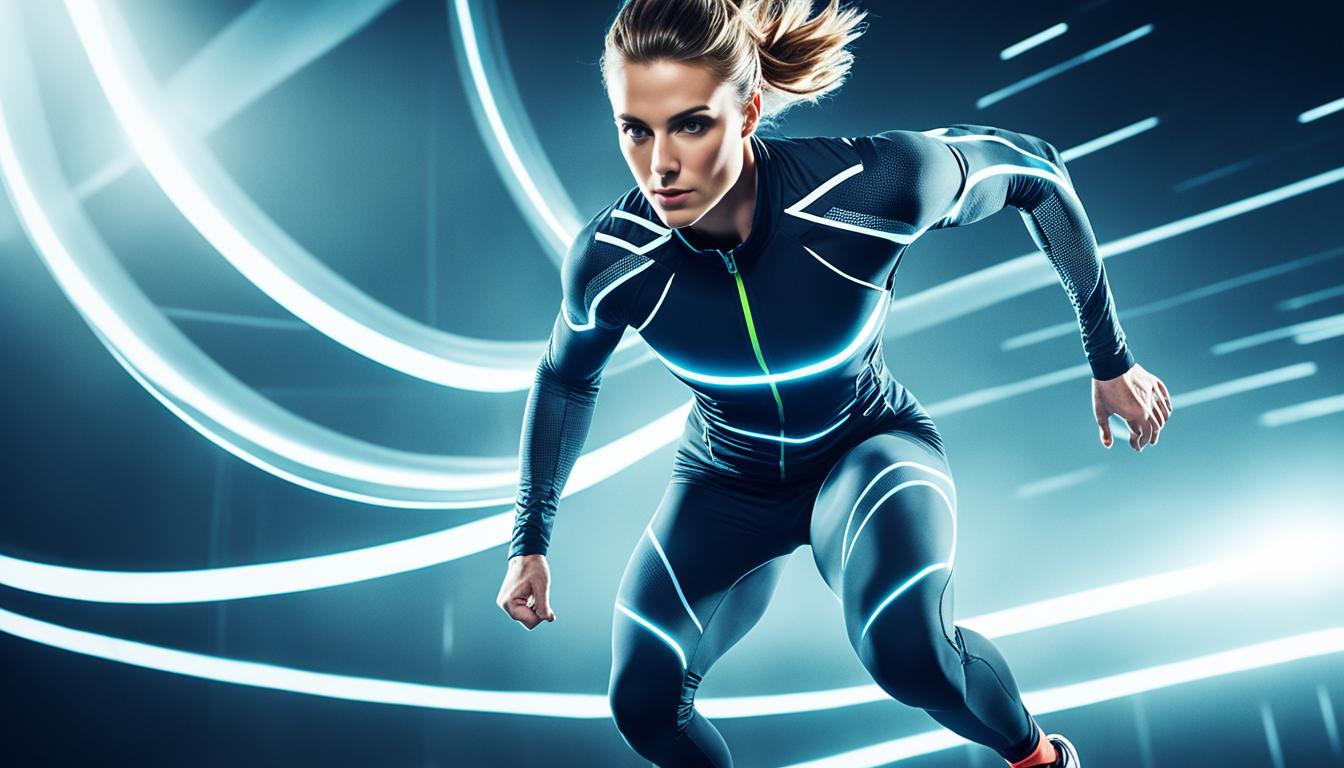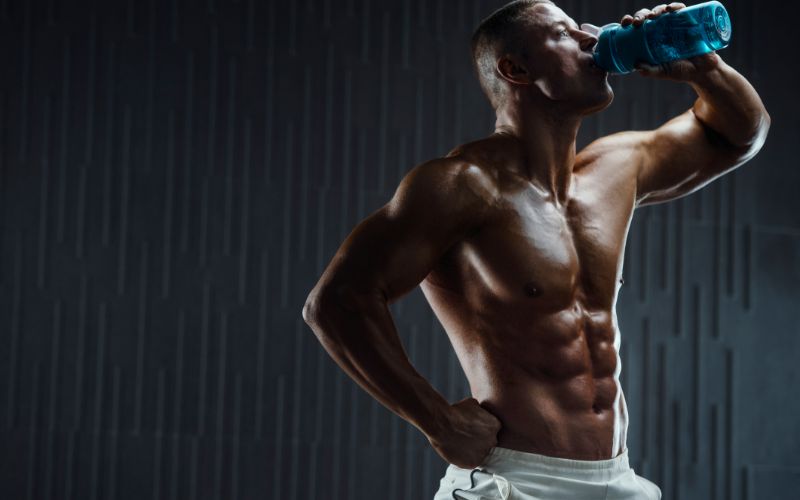The landscape of sportswear is rapidly evolving, driven by advancements in technology, sustainability, and athlete-centric design. This article explores the latest innovations shaping the future of activewear, focusing on how these changes can enhance athletic performance and comfort. By understanding these trends, athletes and fitness enthusiasts can make informed choices about their gear, ensuring they are equipped to achieve their fitness goals effectively and sustainably.
In this article you will find:
The Science Behind Performance Fabrics
In the ever-evolving world of sportswear, the significance of performance fabrics cannot be overstated. These innovative materials are meticulously designed to enhance athletic performance, offering benefits that go far beyond traditional fabrics. Understanding the science behind these materials can empower athletes and fitness enthusiasts alike to make informed choices that can transform their workouts and overall fitness journey.
Understanding Performance Fabrics
Performance fabrics are engineered with specific properties that cater to the needs of athletes. Unlike conventional materials, these fabrics incorporate advanced technologies aimed at optimizing comfort, durability, and performance. Key characteristics of performance fabrics include:
- Moisture Management: These fabrics wick away sweat from the body, keeping athletes dry and comfortable during intense workouts.
- Breathability: Performance fabrics allow for better air circulation, helping to regulate body temperature and prevent overheating.
- Stretchability: Many performance fabrics are designed with a certain degree of elasticity, providing freedom of movement essential for various athletic activities.
- Durability: Engineered to withstand rigorous conditions, performance fabrics resist wear and tear, ensuring longevity.
The Role of Technology in Fabric Innovation
Modern advancements in textile technology have led to the creation of unique materials that redefine the limits of sportswear. Some groundbreaking technologies include:
- Smart Fabrics: These fabrics can adapt to environmental changes, such as temperature and humidity, providing real-time comfort adjustments.
- Anti-Microbial Treatments: Many performance fabrics are treated with anti-microbial agents that prevent odor buildup, allowing athletes to feel fresh during and after workouts.
- UV Protection: Some fabrics offer built-in UV protection, shielding the skin from harmful rays during outdoor activities.
- Recycled Materials: Eco-friendly innovations are also on the rise, with many brands incorporating recycled plastics and sustainable practices into their fabric production.
Benefits of Choosing Performance Fabrics
Incorporating performance fabrics into your athletic wear can lead to significant improvements in your workout experience. Here are some notable benefits:
- Enhanced Comfort: The moisture-wicking and breathable properties of performance fabrics contribute to an overall more enjoyable workout.
- Improved Performance: By minimizing distractions such as sweat and discomfort, athletes can focus better on their training and push their limits.
- Injury Prevention: The right gear can help support muscles and joints, reducing the risk of injuries during high-impact activities.
As you consider your fitness wardrobe, it’s essential to evaluate the materials that comprise your gear. Investing in quality performance fabrics can greatly influence your workouts and help you reach your goals more effectively.
For more insights into the impact of innovative fabrics on sportswear, check out this resource that explores how technology is reshaping the athletic apparel landscape.
Next, we will delve into the innovative technologies transforming activewear, highlighting how these advancements can further elevate your fitness experience.
Innovative Technologies Transforming Activewear
The world of activewear is undergoing a remarkable transformation, driven by innovative technologies that enhance performance, comfort, and style. These advancements are not merely trends; they represent a significant shift in how athletes and fitness enthusiasts experience their workouts. Understanding these technologies can help you choose gear that maximizes your potential and elevates your performance.
Wearable Technology: The Future of Fitness
Wearable technology has revolutionized the fitness landscape, providing real-time data that helps athletes optimize their training. Devices like smartwatches, fitness trackers, and smart clothing monitor various metrics, including heart rate, calories burned, and even sleep patterns. The insights gained from this data allow athletes to:
- Personalize Training Regimens: Tailor workouts based on performance metrics for more effective results.
- Monitor Progress: Track improvements over time, motivating users to set and achieve new goals.
- Enhance Recovery: Identify optimal rest periods and recovery strategies to prevent injuries.
For instance, brands like Fitbit and Apple Watch are leading the charge in wearable fitness technology, offering features that empower users to take charge of their fitness journeys.
Smart Fabrics: Beyond Conventional Materials
Smart fabrics are at the forefront of technological advancements in activewear. These fabrics incorporate sensors and technology that can monitor physical activity and physiological responses. Key features of smart fabrics include:
- Biofeedback: Some fabrics can measure muscle activity, providing feedback on workout intensity and effectiveness.
- Temperature Regulation: Advanced materials can adapt to changes in body temperature, enhancing comfort during workouts.
- Integrated Technology: Fabrics embedded with sensors can communicate with smartphones or other devices, offering a seamless experience.
Brands like Athos are pioneering the use of smart fabrics to provide athletes with insights that were previously only possible through traditional fitness monitoring methods.
3D Printing: Customization and Sustainability
3D printing technology is making waves in the activewear industry by allowing for customized gear that fits the unique body shapes and preferences of athletes. This technology not only enhances comfort but also promotes sustainability. Benefits include:
- Personalized Fit: 3D printing enables the creation of tailored athletic wear that accommodates individual body types.
- Reduced Waste: This method minimizes material waste during production, making it an eco-friendly option.
- Rapid Prototyping: Brands can quickly develop and test new designs, leading to faster innovation cycles.
Companies like Nike are experimenting with 3D printing to create performance footwear that meets the specific needs of athletes while reducing environmental impact.
The Rise of Augmented Reality in Shopping
Augmented reality (AR) is changing how consumers shop for activewear by providing immersive experiences that allow them to visualize products in real-time. This technology helps customers make informed decisions by:
- Virtual Try-Ons: Customers can see how apparel fits and looks on them without physically trying it on.
- Enhanced Product Information: AR can provide detailed information about materials, care instructions, and performance benefits.
- Interactive Shopping Experiences: Retailers can create engaging environments that enhance customer satisfaction and loyalty.
Brands like Adidas are leveraging AR technology to enhance the shopping experience, making it easier for customers to find the perfect gear.
As technology continues to advance, the future of activewear looks promising. The integration of innovative technologies not only enhances performance but also creates a more sustainable and personalized fitness experience. In the next section, we will explore how to choose the right gear to align with your fitness goals, ensuring that you maximize the benefits of these technological advancements.
Choosing the Right Gear for Your Fitness Goals
When it comes to achieving your fitness goals, the right gear can make all the difference. Selecting appropriate activewear and accessories tailored to your specific activities can enhance performance, improve comfort, and increase motivation. With so many options available, understanding how to choose the right gear is essential for maximizing your workout potential.
Identifying Your Fitness Goals
Before investing in new gear, it’s crucial to clearly define your fitness goals. Whether you’re aiming to build strength, improve endurance, or enhance flexibility, your objectives will dictate the type of gear you need. Here are some common fitness goals and corresponding gear considerations:
- Weight Training: Look for supportive footwear, moisture-wicking tops, and durable bottoms that allow for a full range of motion.
- Running: Invest in high-quality running shoes that offer cushioning and support, along with breathable clothing to keep you comfortable.
- Yoga or Pilates: Opt for flexible, stretchy fabrics that provide ease of movement and comfort, along with non-slip mats for stability.
- High-Intensity Interval Training (HIIT): Choose gear that combines breathability with durability, such as tops with mesh panels and bottoms that stay in place during intense movements.
Understanding Fabric Technology
As discussed in previous sections, the fabric technology of your activewear plays a significant role in performance. Here’s how to choose the right materials based on your activities:
- Moisture-Wicking Fabrics: Ideal for high-intensity workouts, these materials pull sweat away from the skin, keeping you dry and comfortable.
- Breathable Mesh Panels: Look for gear with mesh inserts for added ventilation during warm-weather workouts.
- Compression Fabrics: These can enhance blood circulation and reduce muscle fatigue during prolonged activities.
- Eco-Friendly Materials: Consider sustainable options made from recycled materials, which can reduce environmental impact while keeping you stylish.
Finding the Right Fit
The fit of your activewear is just as important as the style and material. Here are some tips to ensure you select gear that fits well:
- Size Appropriately: Always refer to the brand’s sizing chart, as sizes can vary significantly between manufacturers.
- Test for Comfort: Try on items and move around in them to ensure they don’t restrict movement or cause discomfort.
- Consider Layering: If you plan to exercise in varying temperatures, consider base layers that fit snugly under outerwear for added warmth without bulk.
Investing in Quality Over Quantity
While it may be tempting to purchase multiple low-cost items, investing in a few high-quality pieces can pay off in the long run. Quality gear often features:
- Durability: Well-constructed items withstand wear and tear, saving you money on replacements.
- Enhanced Performance: Higher-quality materials typically offer better moisture management, breathability, and comfort.
- Long-Term Value: Good gear can support you through various fitness phases, from beginner to advanced levels.
Brands such as Lululemon and Nike are renowned for their quality and innovative designs, making them excellent options for serious fitness enthusiasts.
Staying Informed About New Trends
As the fitness industry continues to evolve, staying informed about new trends and technologies can help you make better purchasing decisions. Regularly check reputable fitness blogs, magazines, and brand newsletters for updates on:
- New Product Launches: Keep an eye out for innovations that may better suit your workout style.
- Fabric Advancements: Stay informed about the latest technologies in moisture management, breathability, and sustainability.
- Customer Reviews: Reading reviews from fellow athletes can provide insights into the performance and durability of specific products.
Choosing the right gear is a vital step in aligning your equipment with your fitness goals. As you prepare to elevate your performance, understanding how to select the right activewear will enhance your experience and help you achieve your desired results.
Next, we will explore the future of sportswear and its impact on athletes, looking at upcoming innovations and how they will shape the fitness landscape.
The Future of Sportswear and Its Impact on Athletes
The landscape of sportswear is evolving at a breathtaking pace, driven by technological innovations, sustainability initiatives, and a growing understanding of athlete needs. As we look to the future, it is essential to examine how these changes will impact athletes and reshape their performance, comfort, and overall experience in sports.
Smart Wearables: The Next Generation of Performance Monitoring
Wearable technology has already made significant strides in the fitness industry, but the future holds even more exciting possibilities. Smart wearables are expected to become more sophisticated, offering features that include:
- Advanced Biometric Tracking: Future devices may not only monitor heart rate and steps but also analyze muscle strain, hydration levels, and even metabolic rates.
- Real-Time Feedback: Enhanced connectivity will enable wearables to provide immediate feedback during workouts, helping athletes adjust their techniques for optimal performance.
- Integration with Virtual Coaching: Wearables could be linked with AI-driven coaching platforms that offer personalized training plans and guidance based on real-time data.
As these technologies advance, athletes will have unprecedented insights into their performance, enabling them to fine-tune their training regimens and achieve their goals more effectively. Brands like Under Armour are already exploring these advancements to enhance user experiences.
Eco-Friendly Innovations: Sustainable Sportswear
With increasing awareness of environmental issues, the future of sportswear is leaning heavily towards sustainability. Athletes and consumers alike are demanding eco-friendly products that do not compromise on performance. Key trends include:
- Recycled Materials: Brands are beginning to incorporate materials made from recycled plastics and textiles, reducing waste and promoting a circular economy.
- Biodegradable Fabrics: Innovations in fabric technology are leading to the development of biodegradable options that break down naturally, minimizing environmental impact.
- Sustainable Manufacturing Processes: Companies are investing in cleaner production methods that reduce energy consumption and water usage.
By prioritizing sustainability, the sportswear industry not only meets consumer demand but also supports the planet, allowing athletes to perform with pride in gear that aligns with their values.
Customization and Personalization: A Tailored Approach
The future of sportswear will see an increased focus on customization and personalization, allowing athletes to tailor their gear to their specific needs and preferences. This trend encompasses:
- 3D Printing: As discussed previously, 3D printing technology enables the creation of customized apparel and footwear that fits perfectly, catering to individual body shapes.
- Personalized Fit and Design: Advanced fitting technologies will allow consumers to input their measurements online and receive gear that is tailored specifically to them.
- Adaptive Clothing: As awareness of diverse athlete needs grows, brands will develop clothing that accommodates various body types and physical conditions, ensuring inclusivity.
With personalized sportswear, athletes can maximize comfort and performance, ultimately leading to improved results and satisfaction.
Virtual Reality and Augmented Reality in Training
Virtual reality (VR) and augmented reality (AR) are set to revolutionize training methods for athletes. These immersive technologies will provide unique training experiences, including:
- Simulated Training Environments: VR can create realistic training scenarios that allow athletes to practice skills in a controlled setting, enhancing their readiness for real-world competition.
- Interactive Coaching: AR can be used to overlay instructional guidance directly onto the athlete’s field of vision, providing immediate feedback and enhancing learning.
- Enhanced Mental Training: Both VR and AR can be used to develop mental resilience, allowing athletes to visualize success and practice mental strategies in a simulated environment.
As these technologies become more accessible, athletes will have the tools to train smarter and more effectively than ever before.
The future of sportswear promises to be dynamic and transformative, with innovations that not only enhance performance but also prioritize sustainability and inclusivity. As these changes unfold, athletes will benefit from an ever-improving landscape that supports their journey to excellence, ensuring they are equipped to reach their full potential. The future of sportswear is set to transform the athletic experience through innovations in technology, sustainability, and personalization. Wearable devices will provide advanced biometric tracking and real-time feedback, enabling athletes to optimize their training regimens. Sustainability will play a crucial role, with brands increasingly using recycled materials and biodegradable fabrics to align with eco-conscious values. Customization options, including 3D printing and personalized fit technologies, will ensure that gear meets individual athlete needs, enhancing both comfort and performance.
Athletes should focus on investing in high-quality, sustainable activewear that incorporates the latest fabric technologies to maximize their performance. Staying informed about new trends and advancements will help athletes make better purchasing decisions and equip them with the tools they need to reach their full potential.




